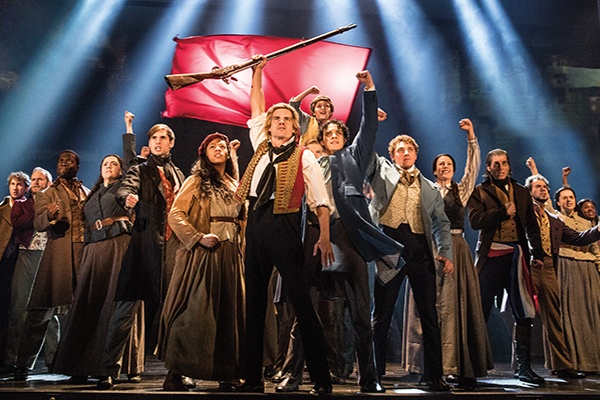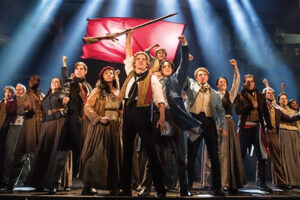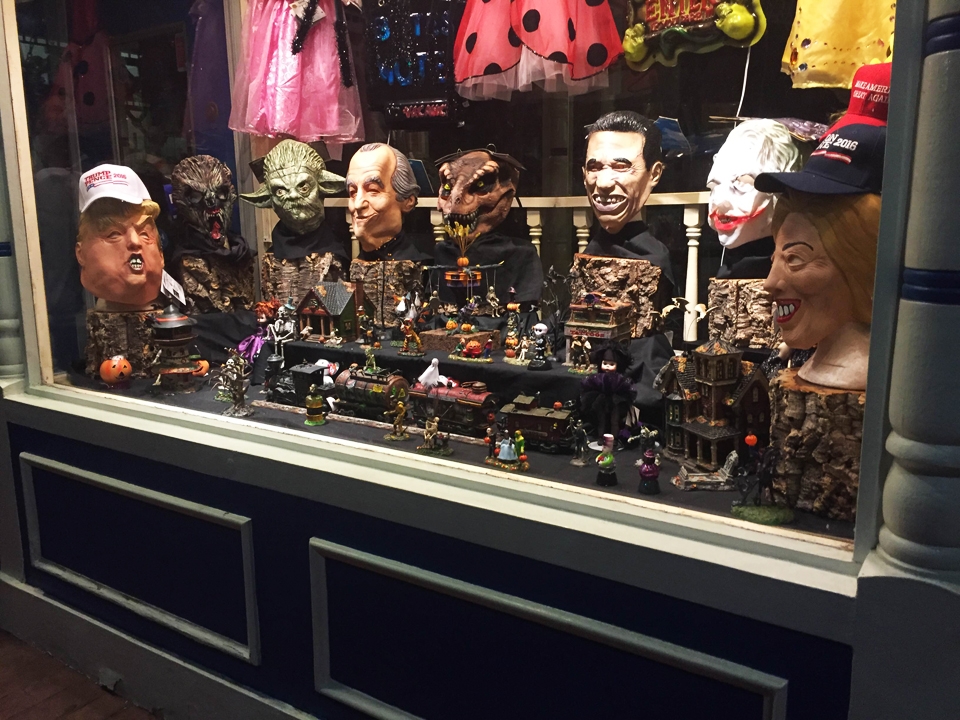

The touring cast of Les Mis, led in this photo by Matt Shingledecker as Enjolras.
Ollie Gratzinger | Editor-in-Chief
12/05/19
On Friday, Nov. 29, the Benedum Theatre downtown was filled to the brim as a story of love, loss, revolution and redemption came center-stage.
Les Miserables, Boublil & Schönberg’s musical magnum opus, is based on the 1862 novel of the same name by Victor Hugo. It follows the story of ex-con-turned-man-of-God Jean Valjean, his surrogate daughter Cosette, the dutiful officer Javert and the rag-tag group of student revolutionaries who almost made history.
Boasting an impressive three-hour runtime with a single intermission, sitting through the show may warrant a trip to the theatre bar before settling in. But Les Mis engages the audience with timeless music, stunning sets and a high-energy intensity bound to keep you on the edge of your seat.
What struck me most about this production of Les Mis was the staging and set design. It was beautiful and intricate, making good use of the space and tools at hand. Projected images gave the illusion of water crashing at the bow of a ship in the opening scene, and later, it looked as though runoff from a sewer was trickling down into the orchestra pit. From workyards and bridges to the barricade and streets of France, the sets were among the most captivating I’ve seen in any show, period.
Most impressive was the scene of Javert’s suicide, in which the set changed mid-segment to shift from showing Javert standing on the bridge to his fall down into the murky waters below; it’s hard to describe how they did it, but the audience was given an aeral view of Javert’s descent, which the actor (Josh Davis) played beautifully. Computer graphics and projected images mingled with the analogue movements of individuals pieces of the set, giving the scene — and the whole show — a fluidity more reminiscent of film than a stage production.
Les Mis is heavy on the singing, even for a musical, and so liking the way the actors play the parts is even more central to enjoying the production. This cast was particularly impressive, with a passionate Valjean (Nick Cartell) in the leading role, comedic physical actors in the roles of the absurd and boorish Thénardiers (Jimmy Smagula and Allison Guinn) and a heartbreaking Fantine (Mary Kate Moore) who played the part of a grieving and desperate mother with elegance and grace.
Cartell stood out, with a dynamic range and a penchant for jumping octaves for emphasis. His rendition of “Bring Him Home,” sung with a chilling falsetto, earned a standing ovation from a full-house crowd.
I was taken aback at first; however, when I heard the lines sung with an American accent. It was an interesting stylistic choice and it was done well, reminding me of the 1987 Broadway recording (without the funky disco bits that were, for the most part, left in the 80s where they belong).
Most fans are more familiar with the Original London Cast recording, though, and when the on-screen adaptation released on Christmas Day 2012, the actors used British accents, too. It was different hearing “Master of the House” sung without an over-the-top Cockney English dialect, but it was still very well done. It all boils down to a simple preference.
Les Mis dazzles wherever it goes, and the Benedum was no exception. This touring cast was wonderful and unique, with memorable sets and passionate performances that really brought a new dimension to a timeless classic.



